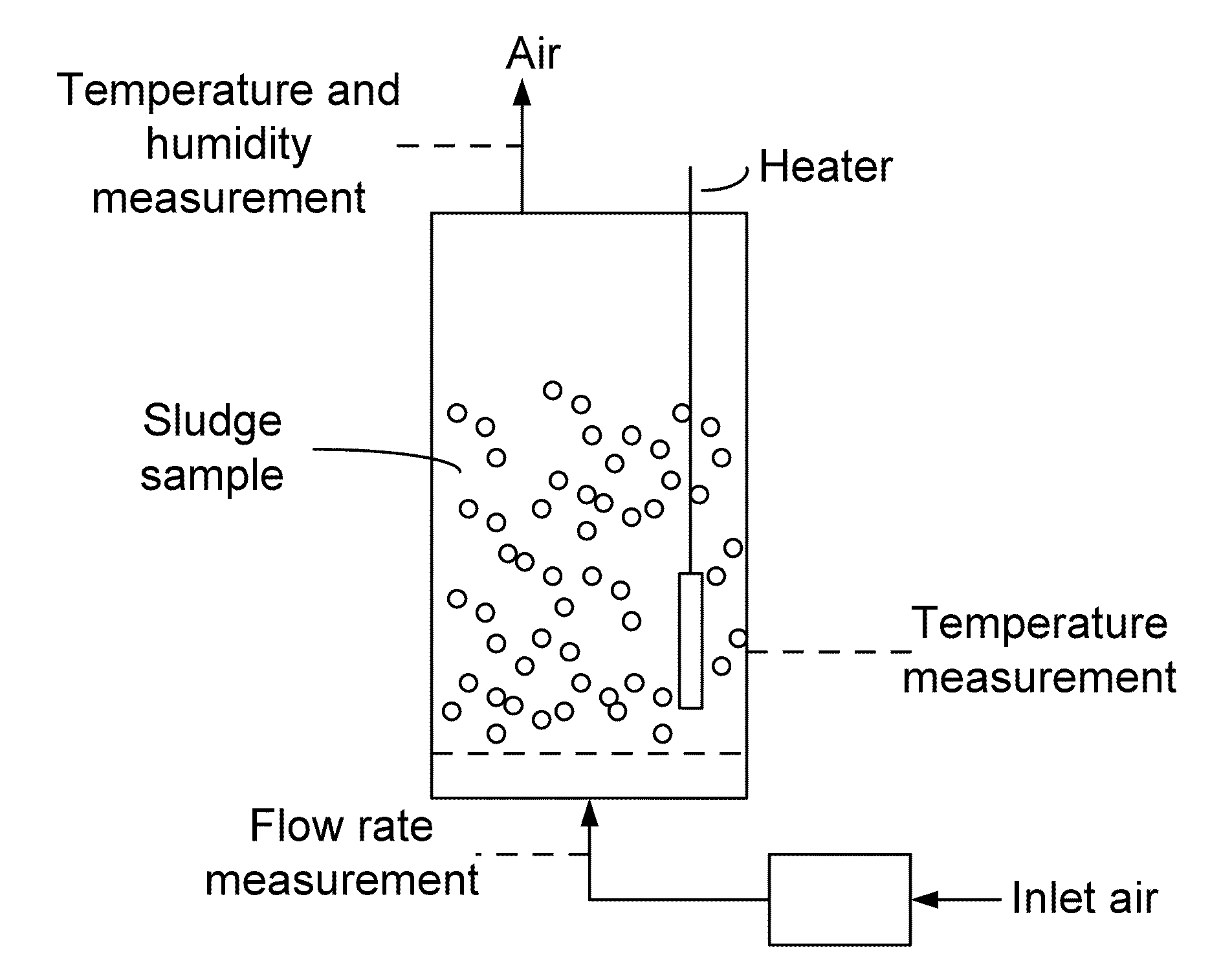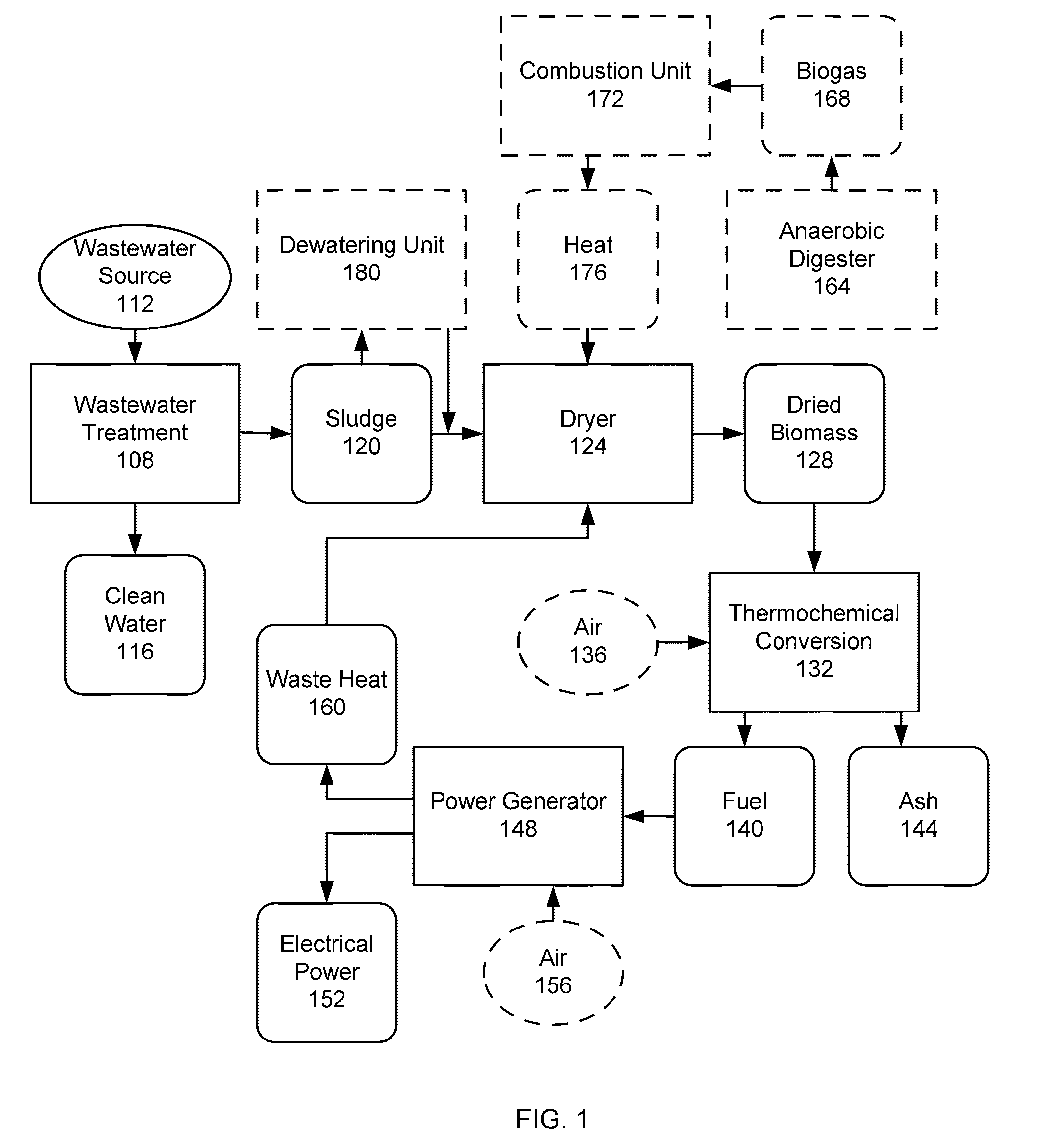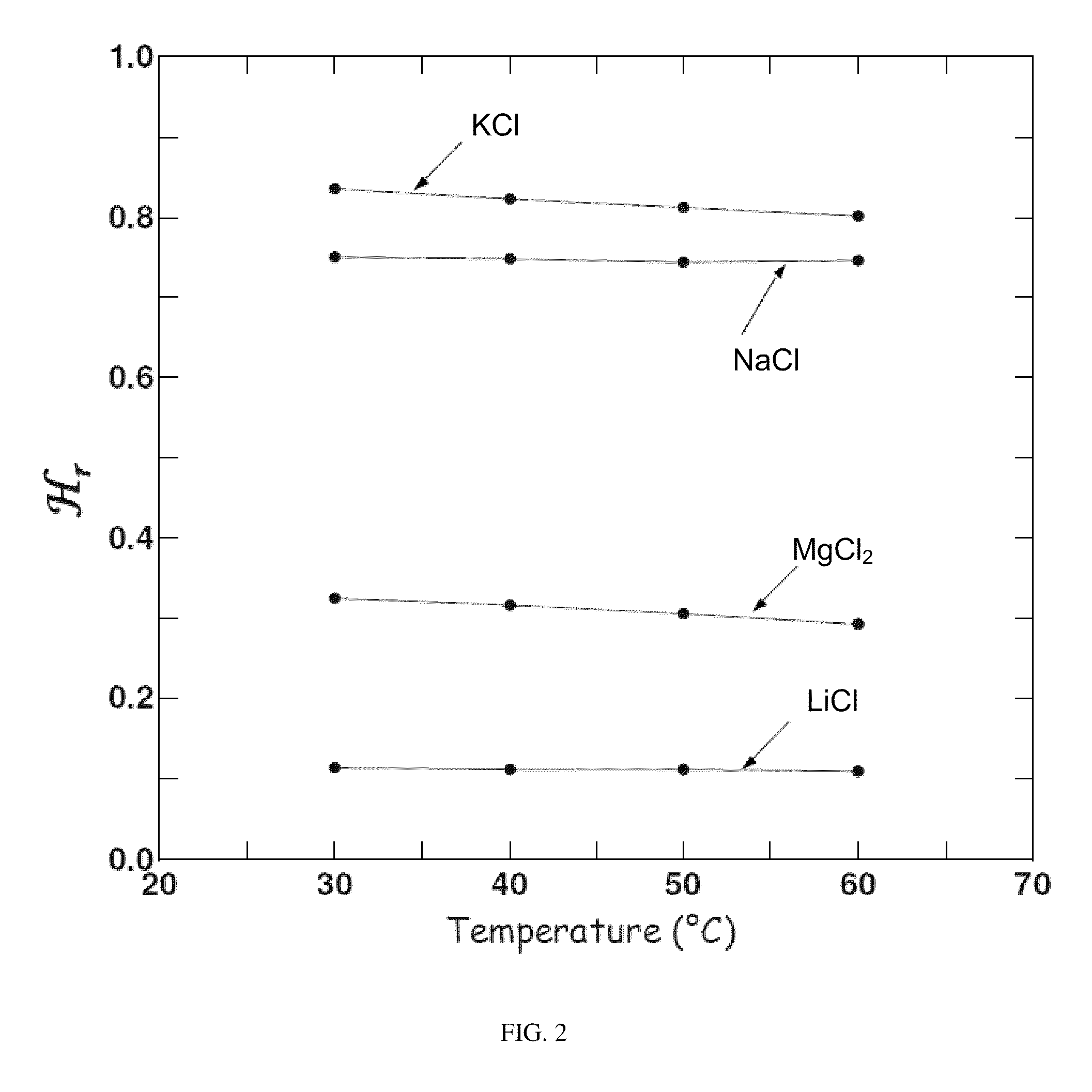System and method for energy production from sludge
a technology of energy production system and wastewater sludge, which is applied in the direction of drying machines, machines/engines, borehole/well accessories, etc., can solve the problem that traditional disposal methods are no longer attractiv
- Summary
- Abstract
- Description
- Claims
- Application Information
AI Technical Summary
Benefits of technology
Problems solved by technology
Method used
Image
Examples
example 1
Determination of Sludge Properties and Fluidized Bed Dryer Design
[0101]Materials and Methods
[0102]Equilibrium Moisture Content
[0103]For the EMC determination, digested biosolids taken from Truckee Meadows Water Reclamation Facility (TMWRF), Reno, which has a typical moisture content of about 85% (wet basis) were used. The samples were kept in polyethylene bags and stored in a refrigerator at about 5° C. The static desiccator technique was used for EMC determination at constant temperature by exposing the biosolids samples to constant relative humidities maintained by saturated salt solutions.
[0104]Glass desiccators containing salt solutions were used as humidity control chambers to fix the relative humidity levels from 0.10 to 0.84. These were kept in temperature controlled environments at four different temperatures (30, 40, 50, 60° C.). The four salts used were lithium chloride, magnesium chloride, sodium chloride, and potassium chloride. The salt solutions were prepared by dissol...
example 2
Integrated Process Flowsheet for Electricity Generation from Sludge
[0137]Drying the sludge is the first step in transforming the waste into electricity. The fuel is converted to electricity, such as by using air gasification to produce a fuel gas, followed by combustion of the gas in a generator, which in turn generates electrical power. Drying can require a substantial amount of heat, so careful heat integration throughout the process can be important for technical and economic feasibility. The integrated process includes a dryer, a gasifier, a gas generator, and heat exchangers for heat integration.
[0138]The present disclosure provides a complete flowsheet to maximize heat integration. The dried fuel is sent to a gasifier, which produces a fuel gas. The fuel gas is burned in a generator for production of electricity. Heat is recovered from the generator to be used in the dryer. FIG. 1 shows the simplified flowsheet for this process. The dryer has been considered in detail above, s...
PUM
| Property | Measurement | Unit |
|---|---|---|
| Temperature | aaaaa | aaaaa |
| Temperature | aaaaa | aaaaa |
| Temperature | aaaaa | aaaaa |
Abstract
Description
Claims
Application Information
 Login to View More
Login to View More - R&D
- Intellectual Property
- Life Sciences
- Materials
- Tech Scout
- Unparalleled Data Quality
- Higher Quality Content
- 60% Fewer Hallucinations
Browse by: Latest US Patents, China's latest patents, Technical Efficacy Thesaurus, Application Domain, Technology Topic, Popular Technical Reports.
© 2025 PatSnap. All rights reserved.Legal|Privacy policy|Modern Slavery Act Transparency Statement|Sitemap|About US| Contact US: help@patsnap.com



